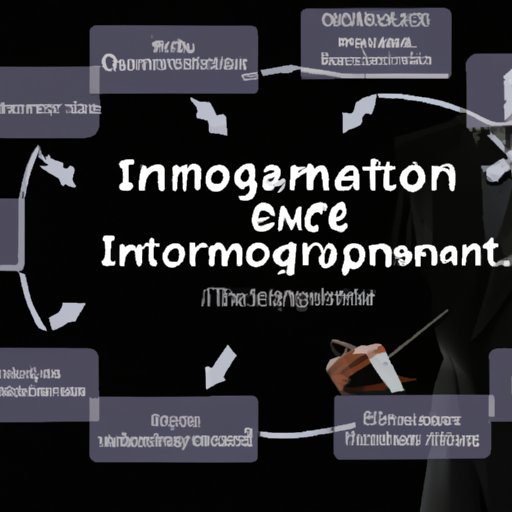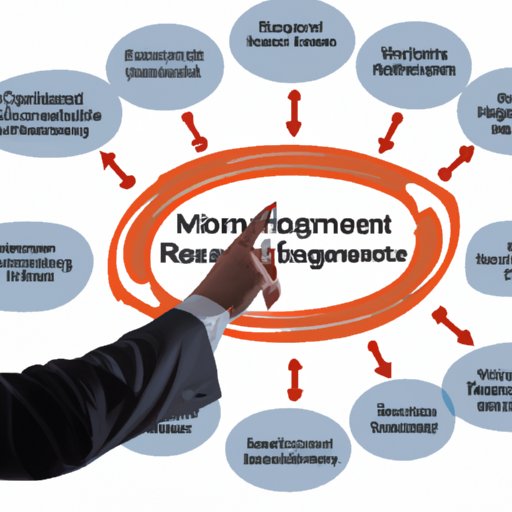Introduction
Information technology (IT) management is the process of managing data, networks, hardware, and software systems. It involves the planning, implementation, and monitoring of IT solutions to meet an organization’s needs and objectives. As businesses become increasingly reliant on technology, IT management has become an essential part of successful operations.

Exploring the Role of Information Technology Management in Business
Businesses of all sizes are recognizing the importance of IT management. According to a survey by CompTIA, “72% of organizations are investing in IT infrastructure and applications to improve efficiency and better serve customers.” With IT solutions, businesses can optimize their processes, increase productivity, and gain a competitive edge.
Benefits of IT Management
The primary benefit of IT management is increased efficiency. By streamlining processes and automating tasks, businesses can reduce costs, save time, and maximize resources. Additionally, IT solutions can help businesses improve customer service, increase data security, and stay compliant with regulations.
Types of IT Solutions
There are many types of IT solutions available to businesses. These include network security and monitoring, data storage and backup, software development, cloud computing, and more. Companies may choose to outsource IT services or hire an in-house team of IT professionals. The right solution will depend on the company’s size, budget, and needs.

Utilizing IT Management to Streamline Business Processes
One of the primary goals of IT management is to streamline business processes. This includes both internal processes, such as accounting and payroll, and external processes, such as customer relationship management (CRM). By utilizing IT solutions, businesses can streamline these processes and make them more efficient.
Streamlining Internal Processes
With IT solutions, businesses can automate internal processes such as accounting, payroll, and inventory management. Automation can simplify and speed up these processes, resulting in cost savings and improved accuracy. Additionally, IT solutions can be used to track employee performance, monitor employee attendance, and manage employee records.
Automating External Processes
IT solutions can also be used to automate external processes. For example, CRM software can be used to manage customer relationships and track customer data. Additionally, marketing automation tools can be used to create and manage campaigns, monitor customer responses, and analyze results. Automating these processes can help businesses save time and money, while improving customer satisfaction.

Examining the Challenges of IT Management in a Digital Age
While IT management offers many benefits, it also presents challenges. As businesses increasingly rely on technology, they must be aware of potential risks. These include cybersecurity threats, data storage and accessibility, and compliance with regulations.
Cybersecurity Threats
As businesses store more data online, they become vulnerable to cyberattacks. According to a study by Risk Based Security, “the number of reported data breaches worldwide increased by 11% in 2020.” To protect against these threats, businesses must invest in robust cybersecurity measures, such as firewalls, antivirus software, and encryption.
Data Storage and Accessibility
Another challenge of IT management is data storage and accessibility. Businesses must ensure that their data is stored securely and can be accessed quickly and easily. Additionally, companies must develop policies and procedures to protect sensitive data from unauthorized access.
Compliance with Regulations
Finally, businesses must comply with relevant laws and regulations. For example, the General Data Protection Regulation (GDPR) requires businesses to protect the personal data of EU citizens. To ensure compliance, businesses must implement data protection measures, such as data encryption and regular audits.
Exploring the Future of IT Management in the Workplace
As technology continues to evolve, IT management will become even more important in the workplace. Emerging technologies such as artificial intelligence (AI), machine learning, cloud computing, and edge computing are transforming the way businesses operate. By leveraging these technologies, businesses can optimize their processes, increase efficiency, and stay ahead of the competition.
AI and Machine Learning
AI and machine learning are revolutionizing the workplace. With AI, businesses can automate complex tasks and analyze large amounts of data. Additionally, machine learning algorithms can be used to identify trends and predict customer behavior. By utilizing these technologies, businesses can save time, money, and resources.
Cloud Computing
Cloud computing is another emerging technology that is changing the way businesses operate. Cloud solutions allow businesses to store and access data remotely, eliminating the need for physical servers. Additionally, cloud solutions can provide scalability, reliability, and cost savings.
Edge Computing
Finally, edge computing is becoming increasingly popular among businesses. Edge computing is a type of distributed computing architecture in which data is processed at the edge of the network. This reduces latency, increases security, and allows businesses to respond quickly to changes in the environment.
Conclusion
In conclusion, IT management is an essential part of successful operations. By utilizing IT solutions, businesses can streamline processes, increase efficiency, and stay competitive. Additionally, emerging technologies such as AI and cloud computing are transforming the way businesses operate. While IT management presents challenges, businesses that embrace these technologies can reap the rewards.
(Note: Is this article not meeting your expectations? Do you have knowledge or insights to share? Unlock new opportunities and expand your reach by joining our authors team. Click Registration to join us and share your expertise with our readers.)
